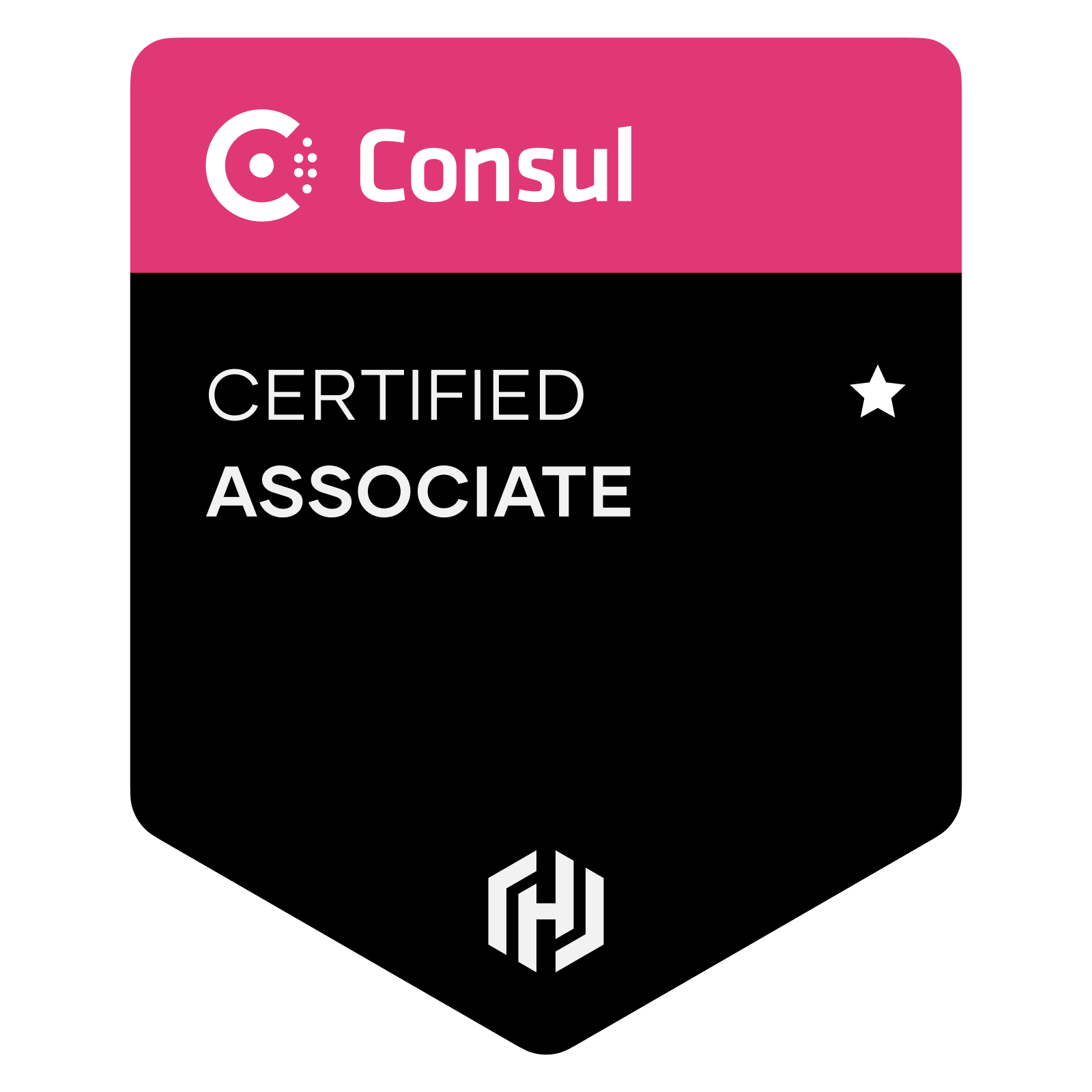Prerequisites
- Containerization knowledge
- Basic terminal skills
- Networking skills including load balancing and distributed systems
- Understand the purpose of ACLs
- Experience with TLS certificate lifecycle
Product version tested
Consul 1.8 or higher
Preparing for the exam
You will be tested based on the objectives below. The Consul Associate exam has both a study guide and a review guide. While much of the information in these two guides are the same, they are presented differently for different uses. Use the study guide if you want to study all the exam objectives. Use the review guide if you already have Consul experience and/or training and want to pick and choose which objectives to review before taking the exam. There are also sample questions available so you can get a feel for what the exam will be like.
Renewing your Consul Associate certification
To renew your Consul Associate certification, you will need to take and pass the Consul Associate exam.
If you hold an unexpired Consul Associate certification:
You can take the exam again starting 18 months after your previous exam date. When you pass the exam, the expiration date on your credentials will be extended.
If you hold an expired Consul Associate certification:
You are eligible to recertify at any time. When you pass the exam again, you will receive a new, separate set of credentials with a new expiration date.
Exam details
| Assessment Type |
Multiple choice |
| Format |
Online proctored |
| Duration |
1 hour |
| Price |
$70.50 USD plus locally applicable taxes and fees Free retake not included
|
| Language |
English |
| Expiration |
2 years |
Exam objectives
| 1 |
Explain Consul architecture |
| 1a |
Identify the components of Consul datacenter, including agents and communication protocols |
| 1b |
Prepare Consul for high availability and performance |
| 1c |
Identify Consul's core functionality |
| 1d |
Differentiate agent roles |
| 2 |
Deploy a single datacenter |
| 2a |
Start and manage the Consul process |
| 2b |
Interpret a Consul agent configuration |
| 2c |
Configure Consul network addresses and ports |
| 2d |
Describe and configure agent join and leave behaviors |
| 3 |
Register services and use service discovery |
| 3a |
Interpret a service registration |
| 3b |
Differentiate ways to register a single service |
| 3c |
Interpret a service configuration with health check |
| 3d |
Check the service catalog status from the output of the DNS/API interface or via the Consul UI |
| 3e |
Interpret a prepared query |
| 3f |
Use a prepared query |
| 4 |
Access the Consul key/value (KV) |
| 4a |
Understand the capabilities and limitations of the KV store |
| 4b |
Interact with the KV store using both the Consul CLI and UI |
| 4c |
Monitor KV changes using watch |
| 4d |
Monitor KV changes using envconsul and consul-template |
| 5 |
Back up and restore |
| 5a |
Describe the content of a snapshot |
| 5b |
Back up and restore the datacenter |
| 5c |
[Enterprise] Describe the benefits of snapshot agent features |
| 6 |
Use Consul service mesh |
| 6a |
Understand Consul Connect service mesh high level architecture |
| 6b |
Describe configuration for registering a service proxy |
| 6c |
Describe intentions for Consul Connect service mesh |
| 6d |
Check intentions in both the Consul CLI and UI |
| 7 |
Secure agent communication |
| 7a |
Understanding Consul security/threat model |
| 7b |
Differentiate certificate types needed for TLS encryption |
| 7c |
Understand the different TLS encryption settings for a fully secure datacenter |
| 8 |
Secure services with basic access control lists (ACL) |
| 8a |
Set up and configure a basic ACL system |
| 8b |
Create policies |
| 8c |
Manage token lifecycle: multiple policies, token revoking, ACL roles, service identities |
| 8d |
Perform a CLI request using a token |
| 8e |
Perform an API request using a token |
| 9 |
Use gossip encryption |
| 9a |
Understanding the Consul security/threat model |
| 9b |
Configure gossip encryption for the existing data center |
| 9c |
Manage the lifecycle of encryption keys |
